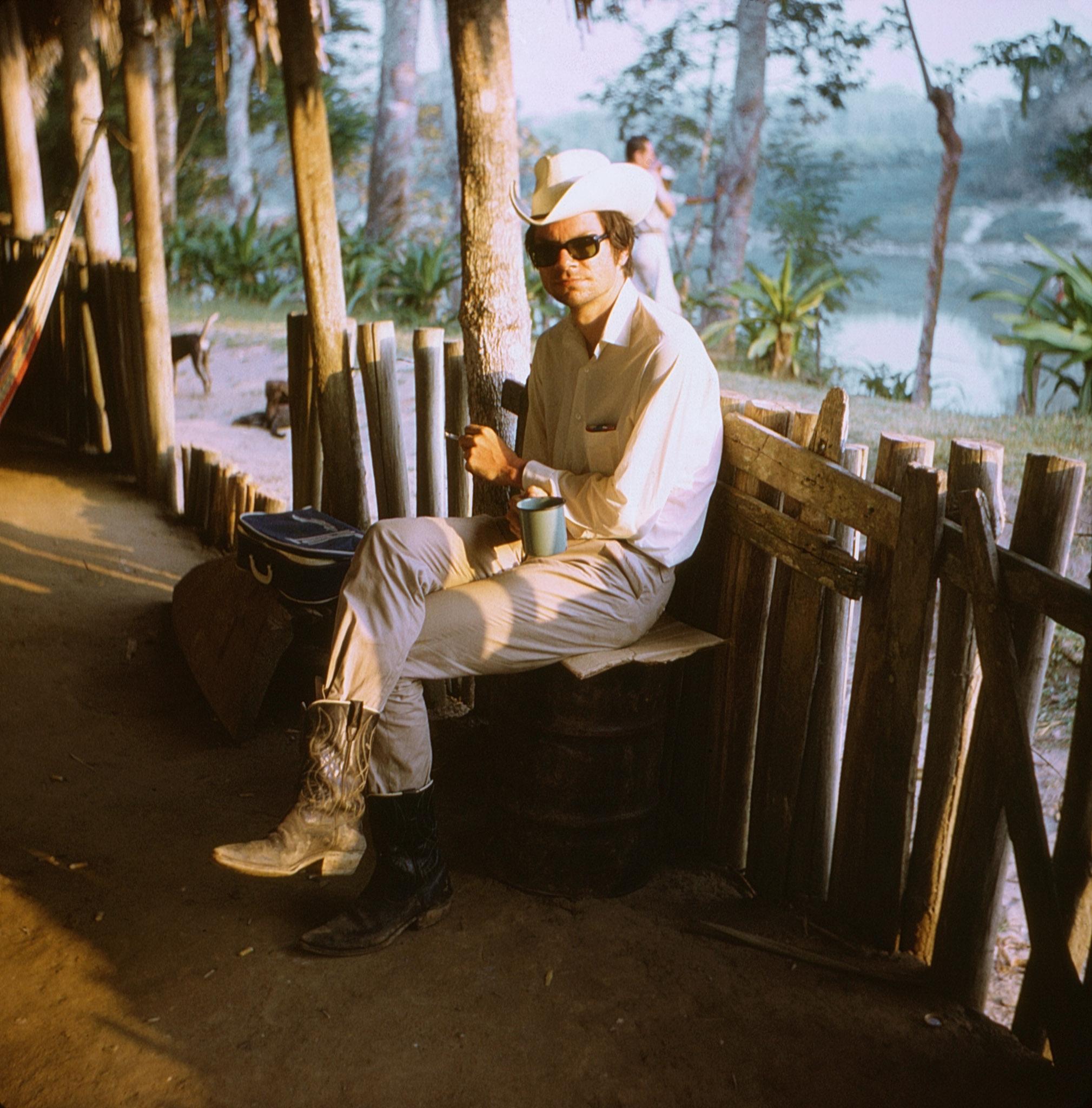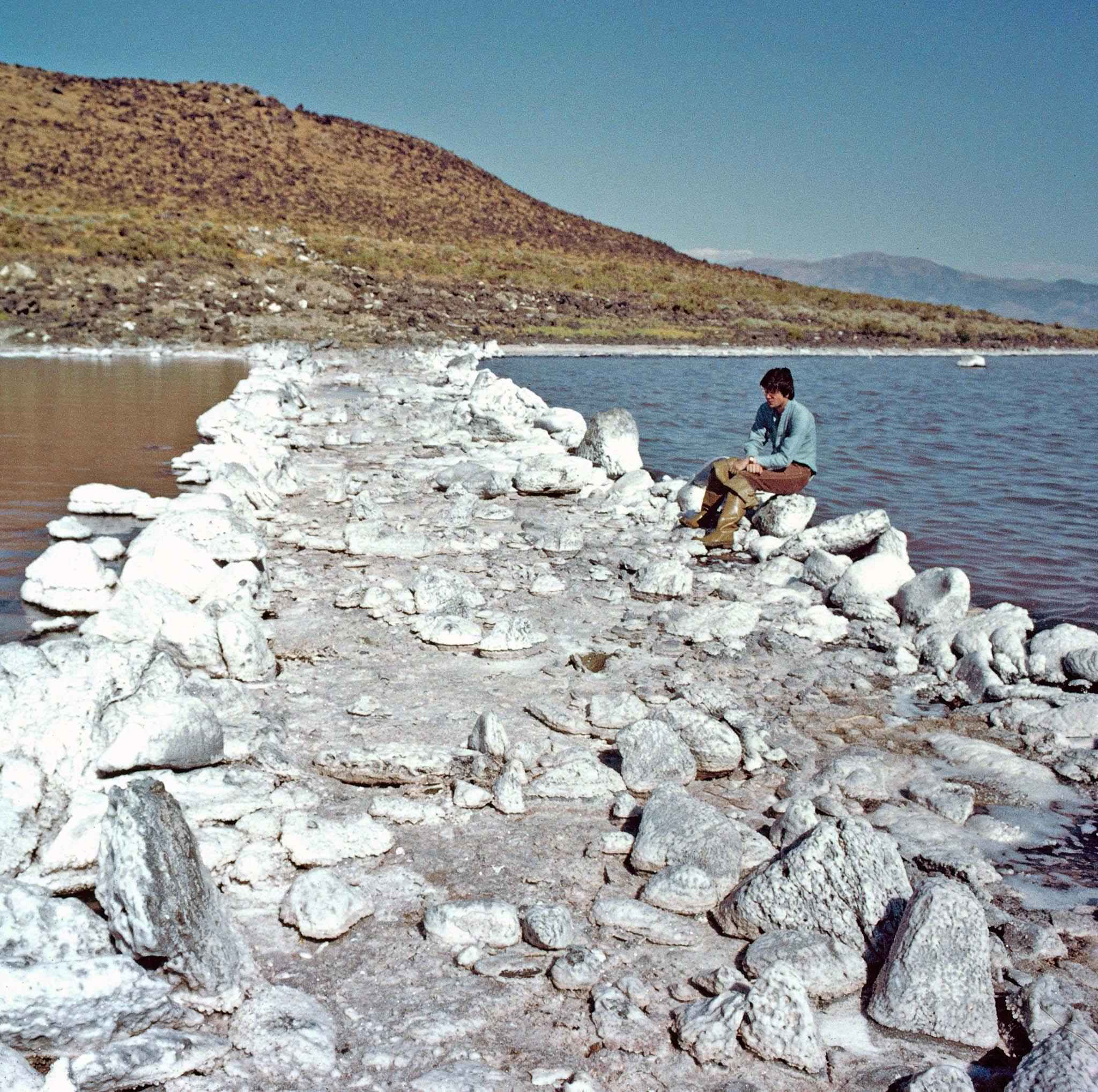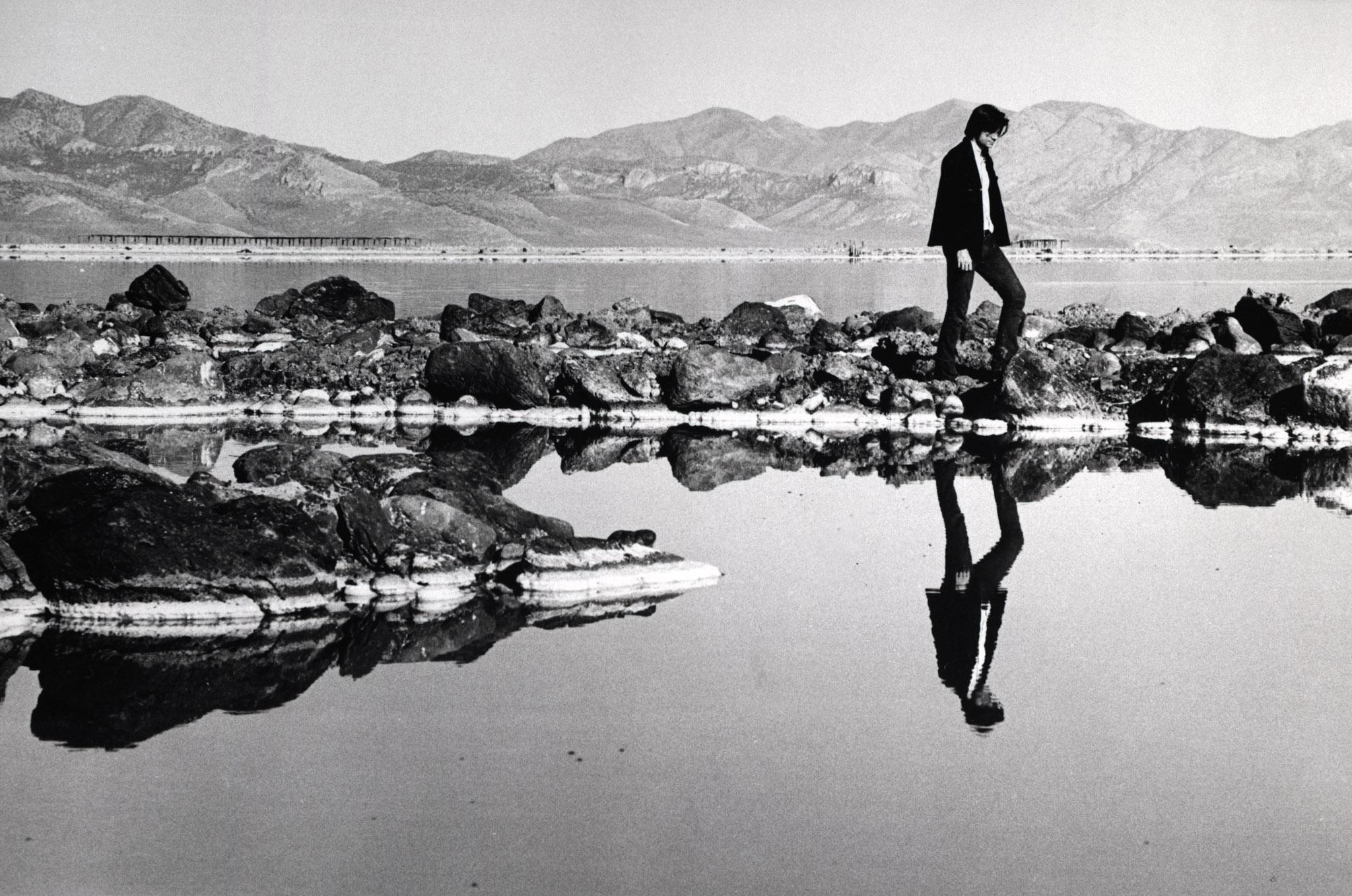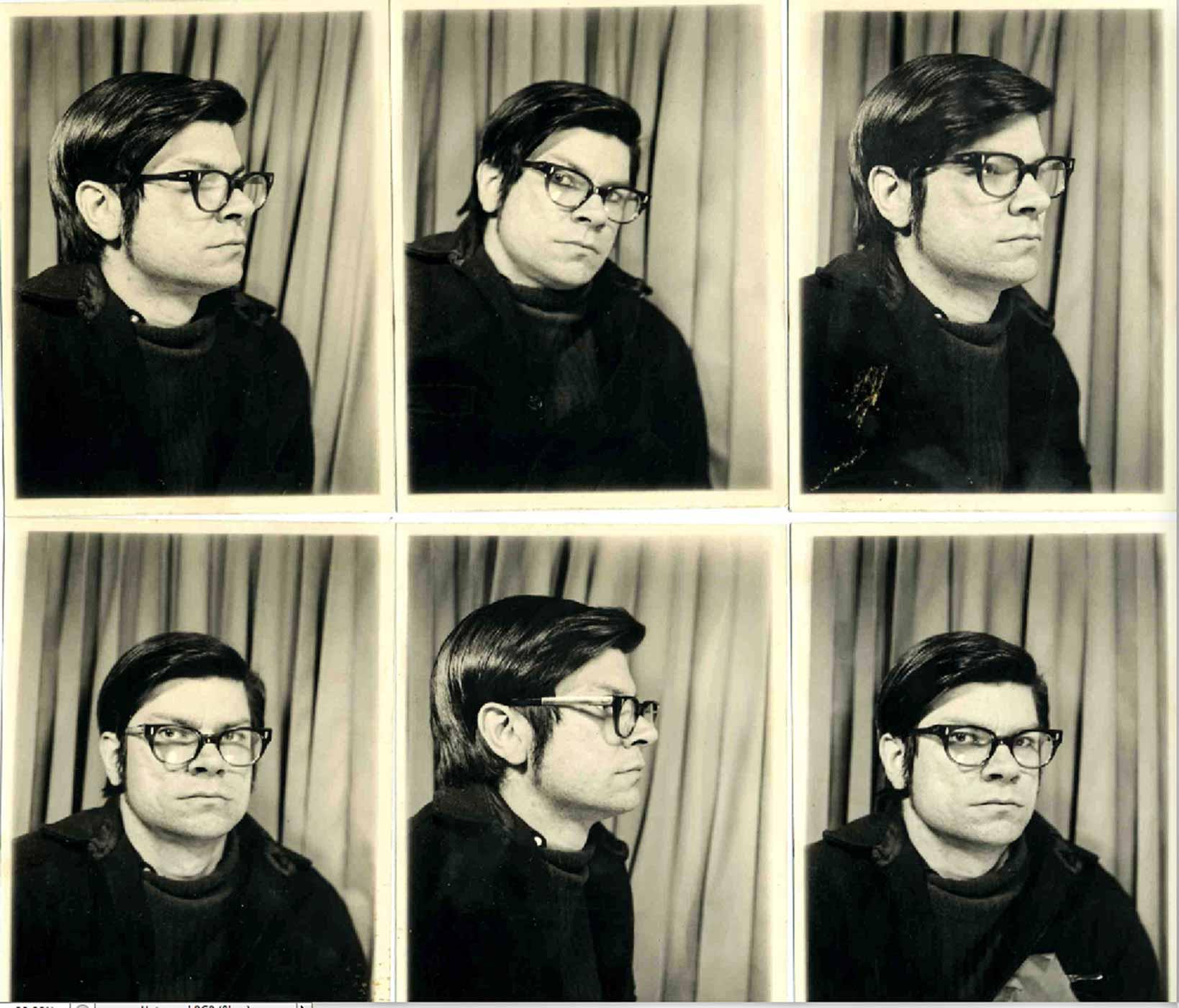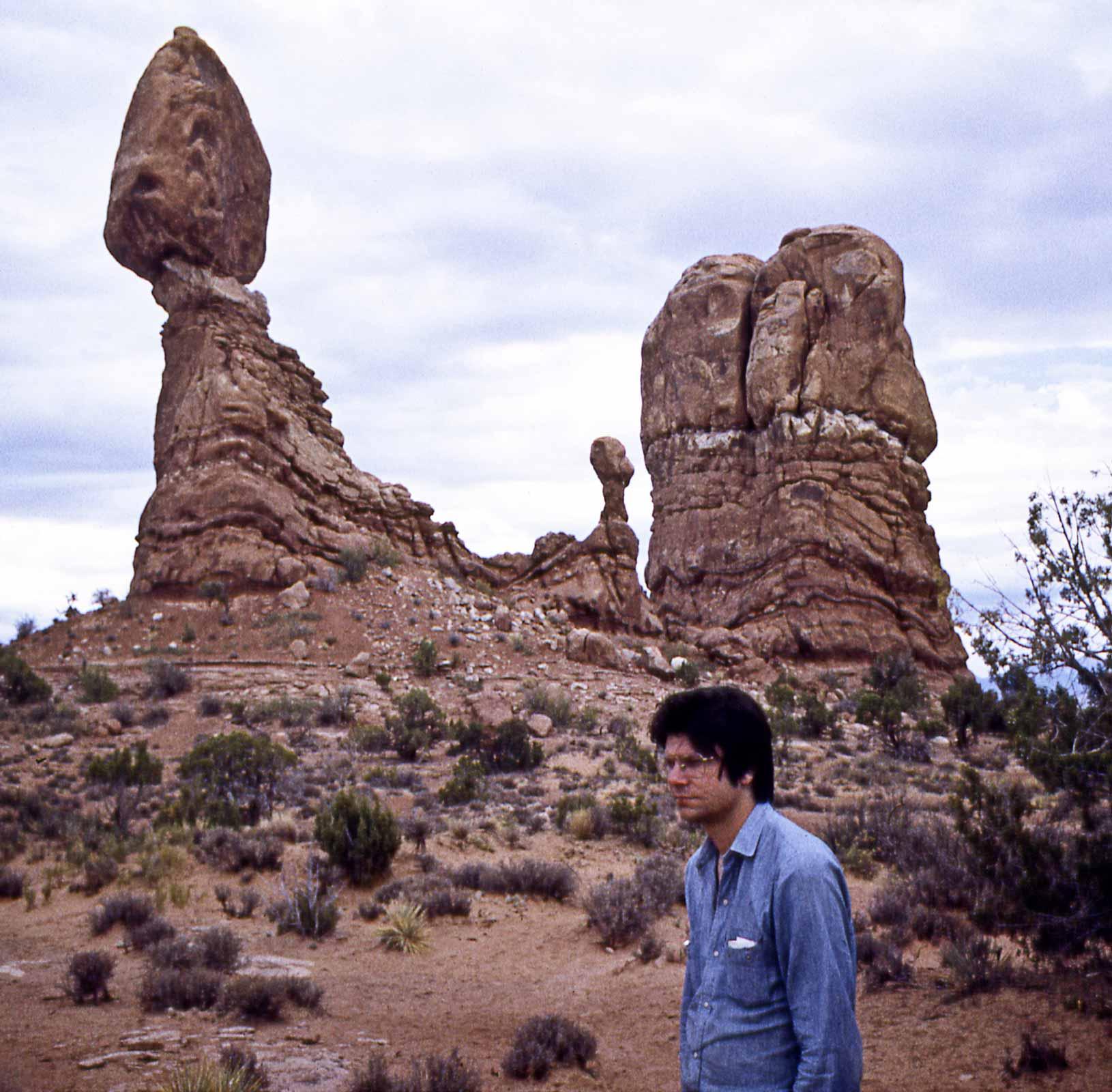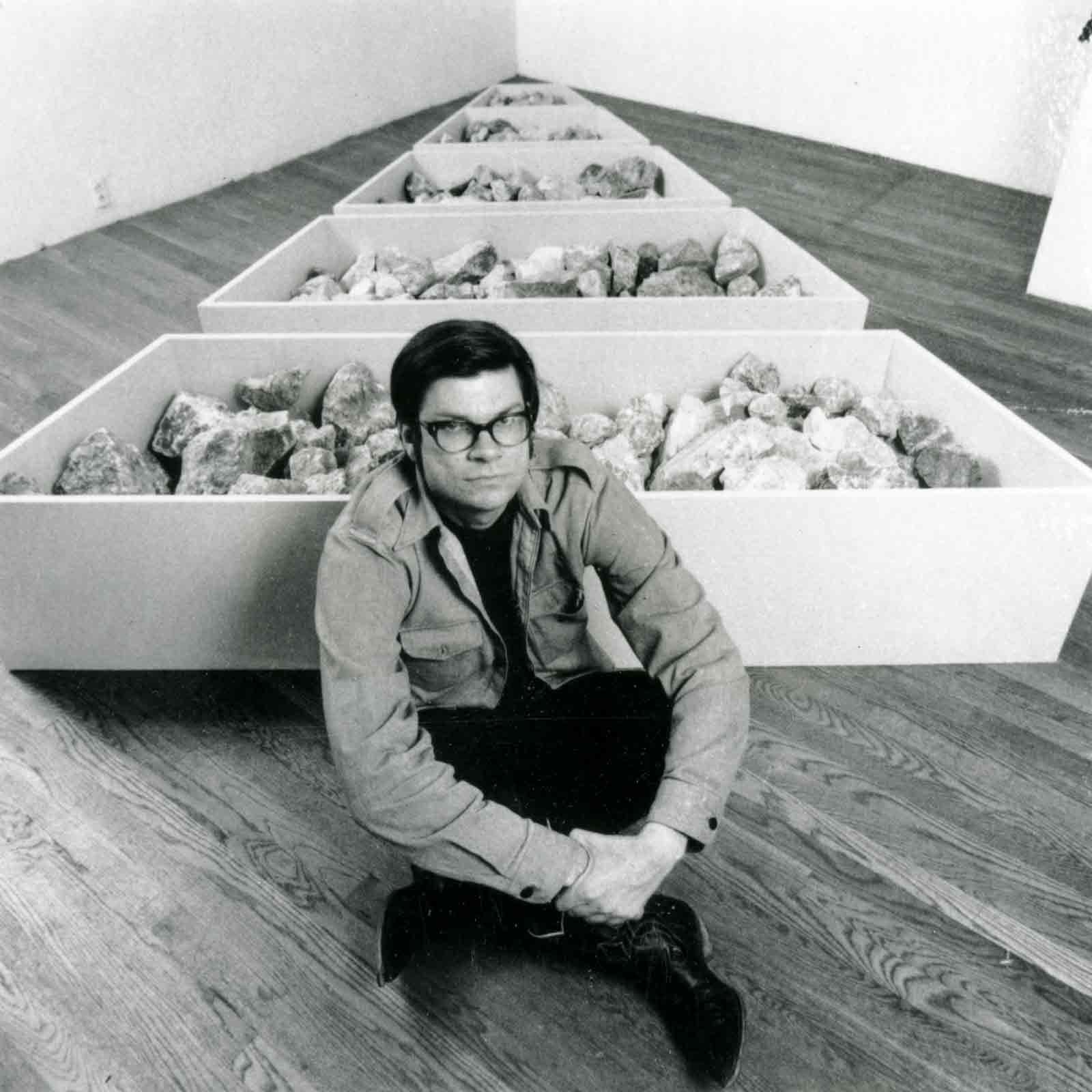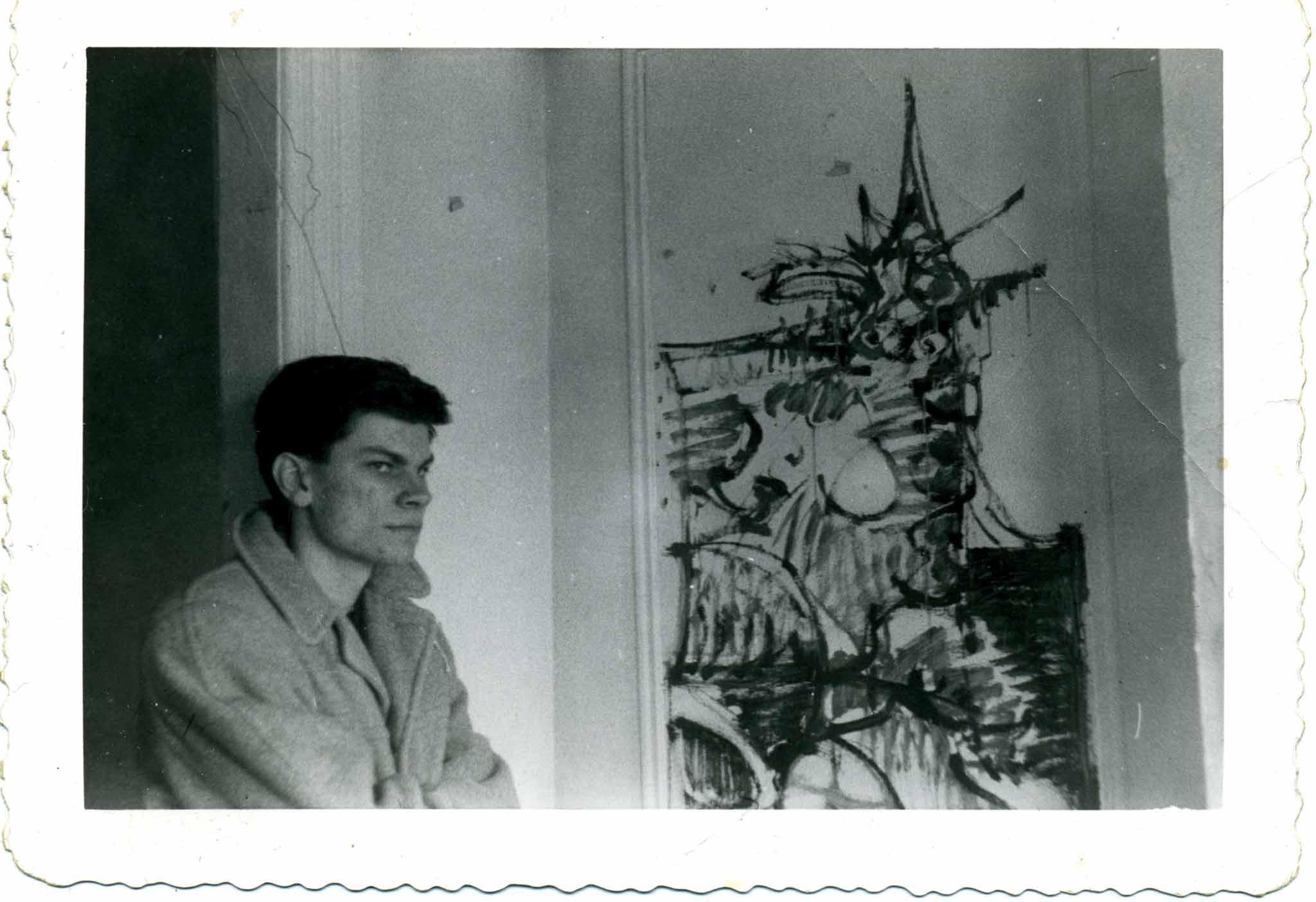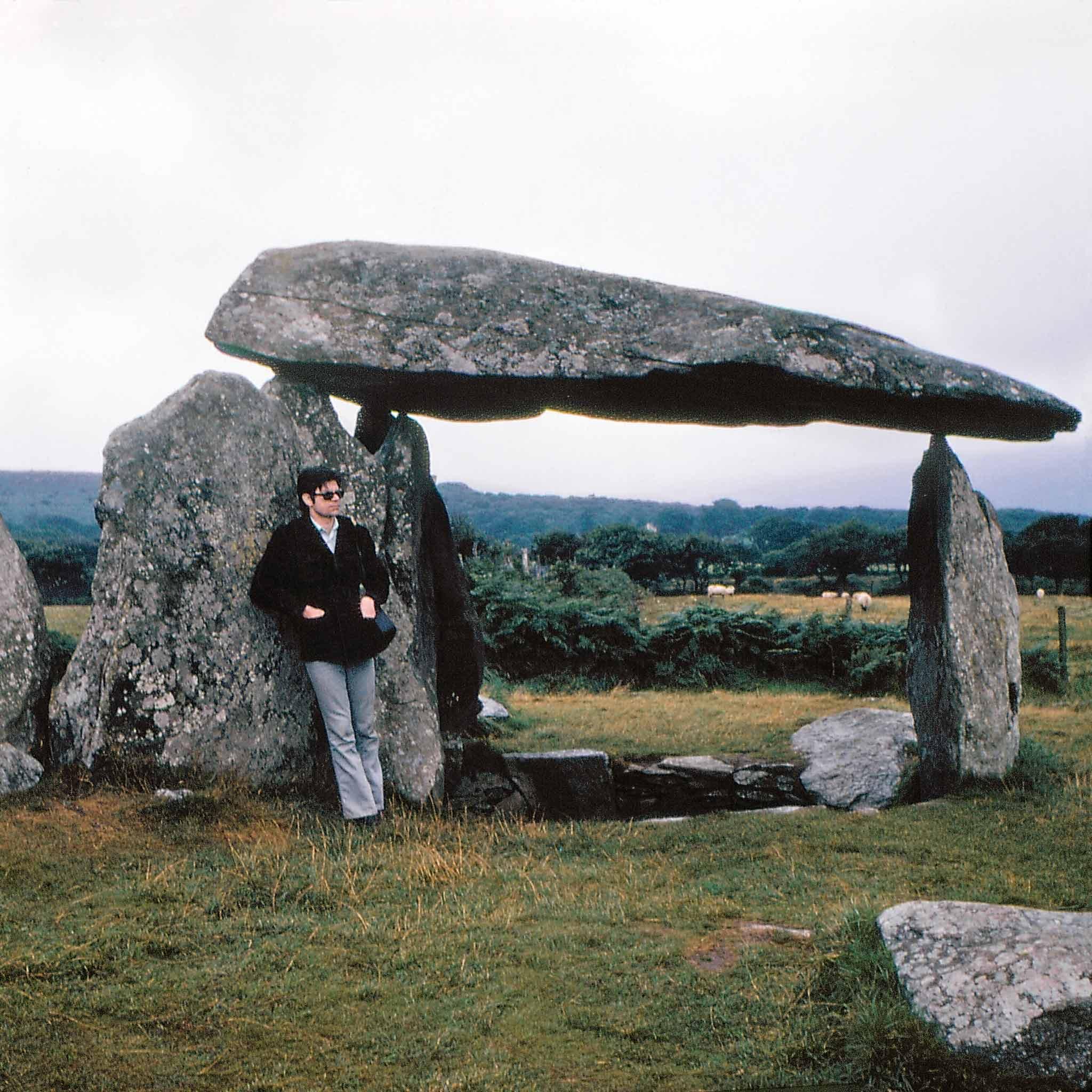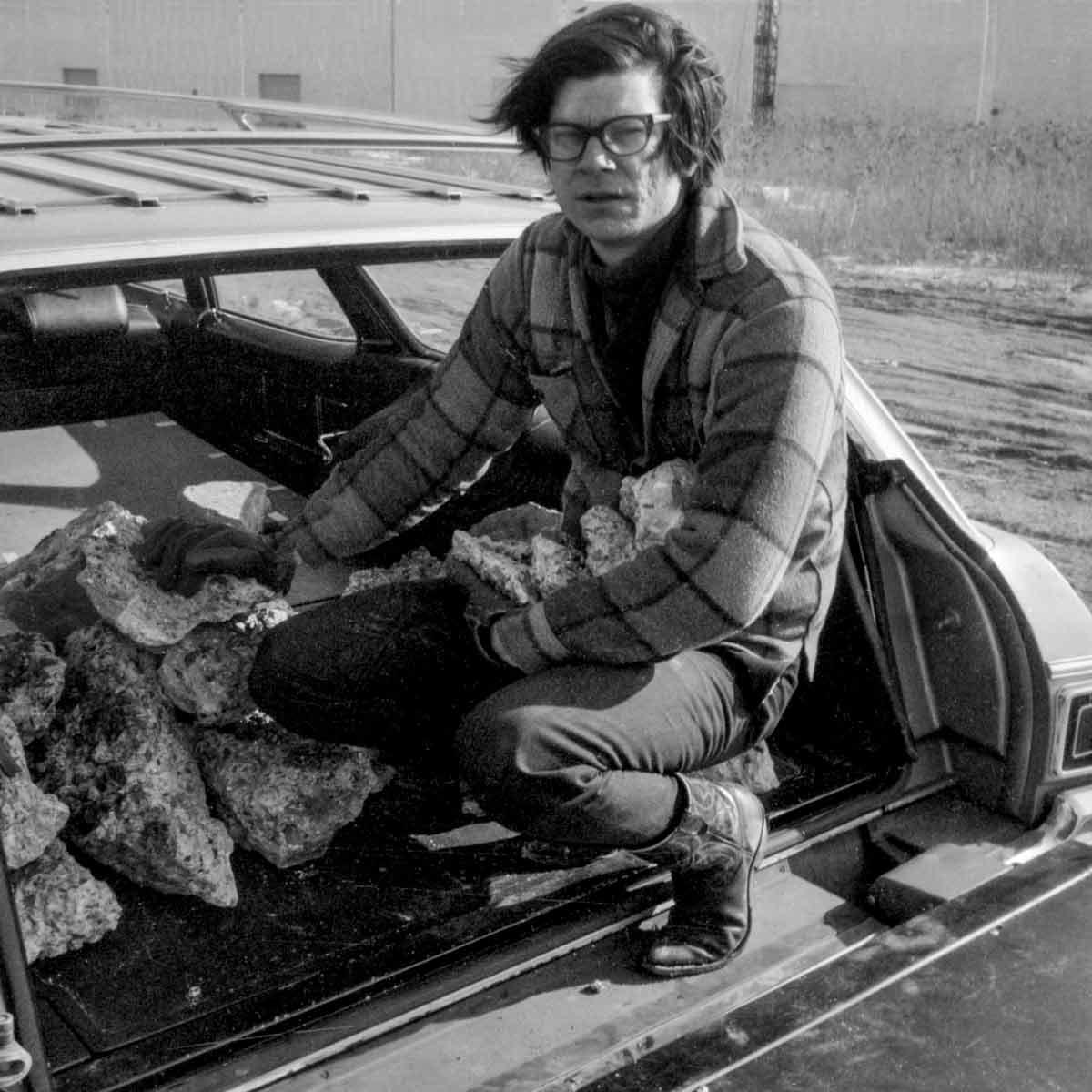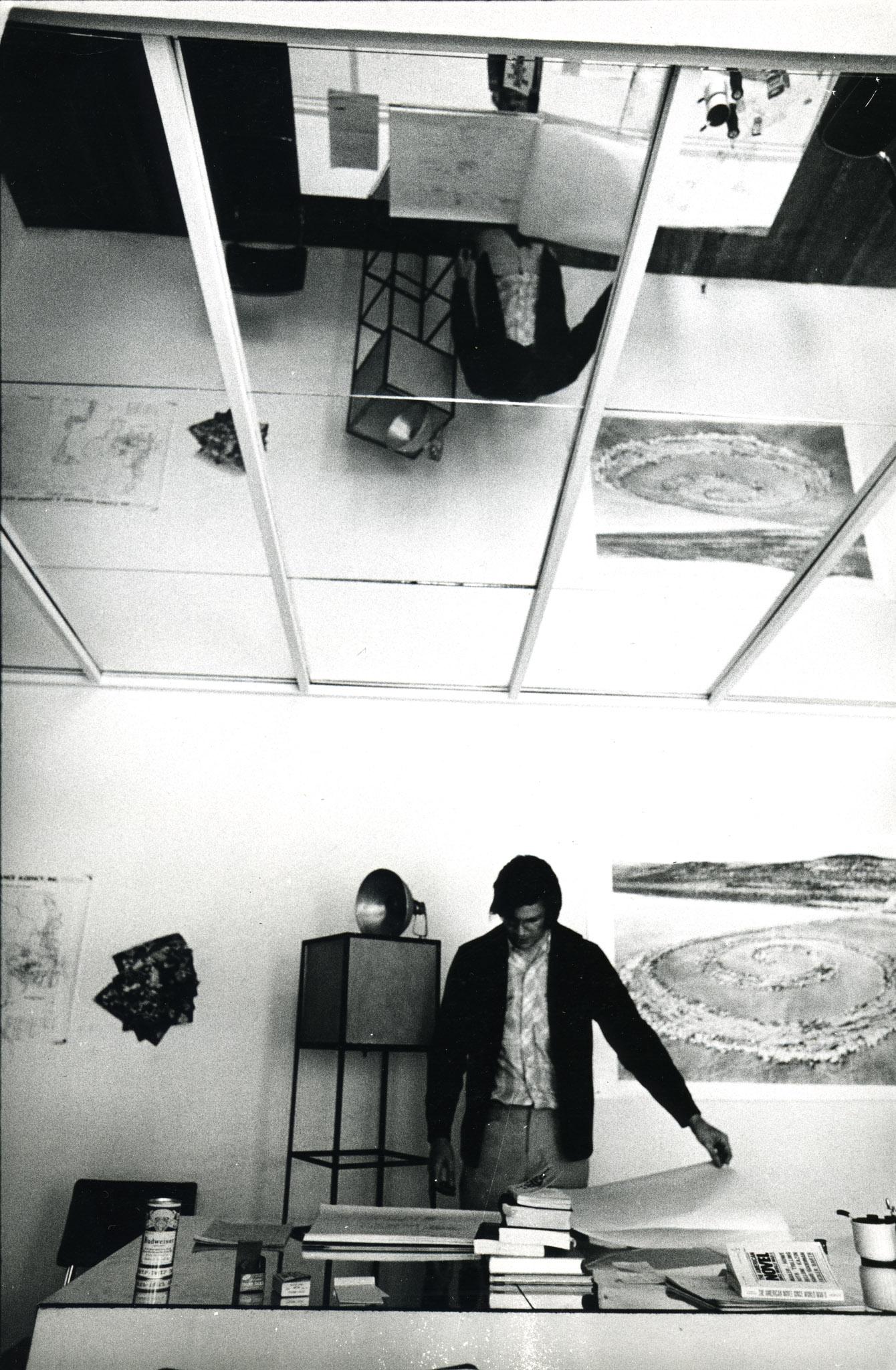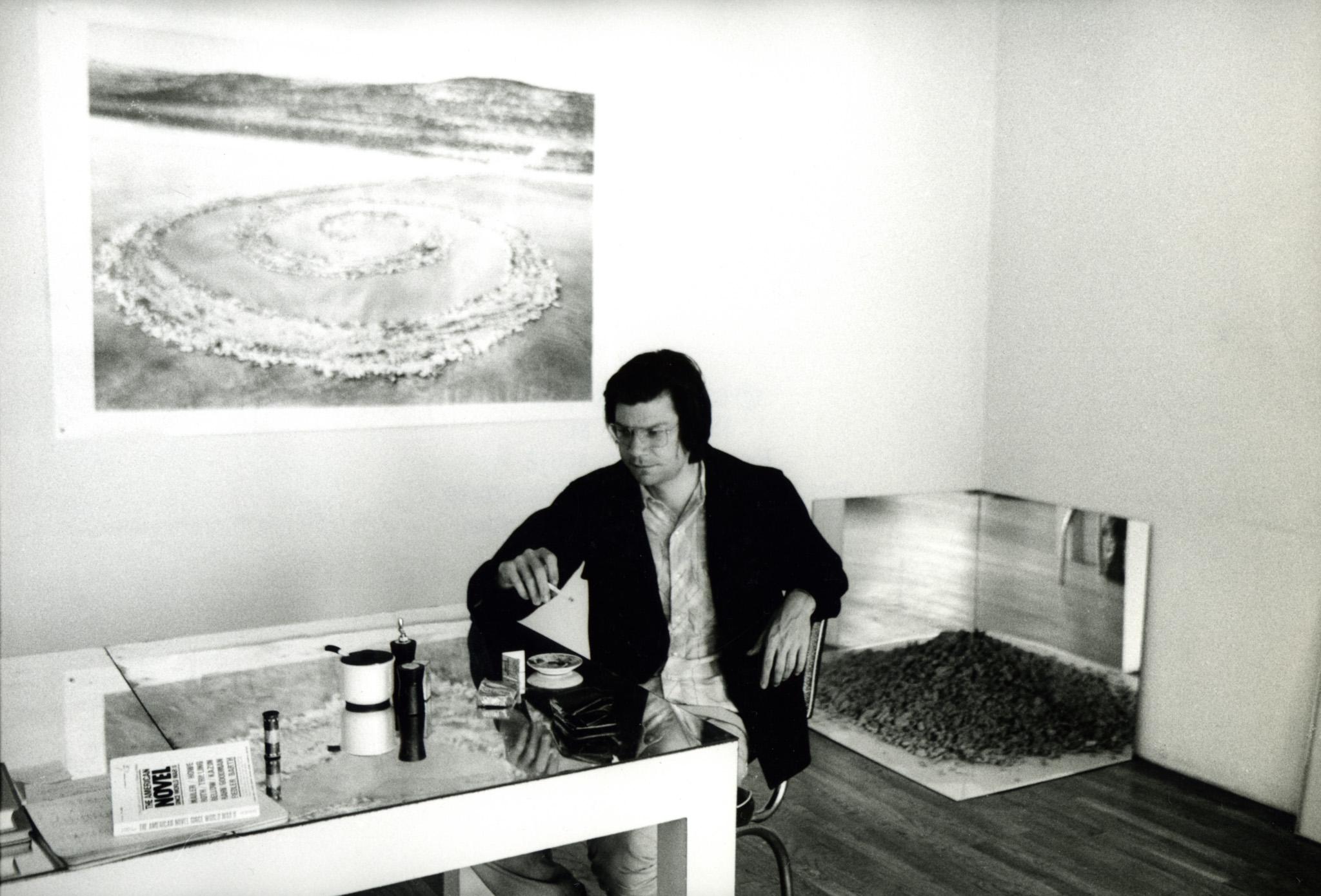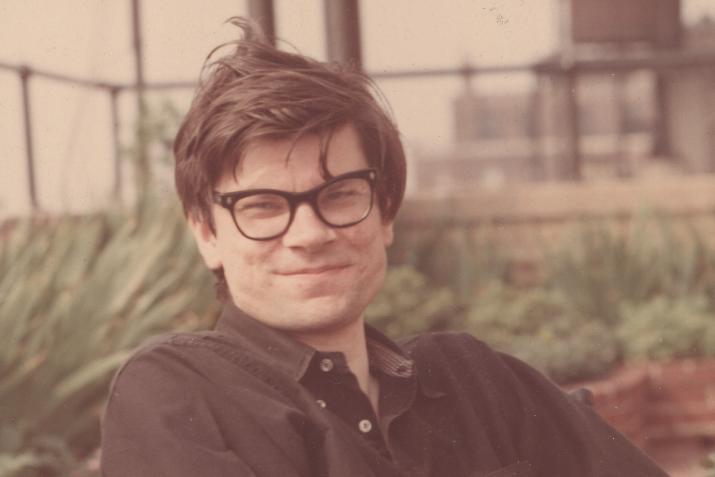
Biography
of
Robert Smithson

Born in Passaic in New Jersey, Robert Smithson (January 2, 1938—July 20, 1973) was an artist who expanded what art could be and where it could be found. For over fifty years his work, writings, and ideas have influenced artists and thinkers, building the ground from which contemporary art has grown.
An autodidact, Smithson's interests in travel, cartography, geology, architectural ruins, prehistory, philosophy, science fiction, popular culture, and language spiral through his work. In his short and prolific life, Smithson produced paintings, drawings, sculpture, earthworks, architectural projects, films and video, photographs and slideworks, writings, and all the stops between. From his landmark earthworks to his “quasi-minimalist” sculptures, Nonsites, writings, proposals, collages, detailed drawings, and radical rethinking of landscape, Smithson's ideas are profoundly urgent for our times. By exploring the conceptual and physical boundaries of knowledge Smithson raised essential questions about our place in the world.
Smithson’s New Jersey upbringing formed his artistic sensibility: he was born in Passaic, and soon after moved to nearby Rutherford, and later to Clifton. Throughout his life, Smithson was as passionate about geology and natural history as he was about art and culture. For him, art was of the world rather than being about the world. In 1954, during his third year of high school, Smithson received a scholarship to study at the Art Students League in New York City and on meeting artists and poets he found himself in a realm of like-minded thinkers. While studying he met the publisher Alan Brilliant, who commissioned Smithson to design two covers of the magazine Pan. Smithson served in the United States Army Reserves in 1956, before moving to New York City in 1957.
In 1957 Brilliant invited Smithson to present his first solo exhibition in Brilliant’s apartment, comprising painting and works on paper. In 1959 the Artists’ Gallery was Smithson’s second one-person exhibition of sixteen paintings drawing on literary and fantastic themes. One of the first announcements naming Smithson as an artist was in 1959, in the October issue of Art News where Irving Sandler described him as “a promising New Jersey artist now living in New York, [who] shows painted collages based on vertical bars within which are caged raving multi eyed dinosaurs and flesh eaters.” Smithson’s early paintings, drawings, and sculptures were filled with references to poetry, popular culture, and science fiction. The artist’s peripatetic life took him to Rome in 1961, when George Lester offered him his first solo international exhibition at Galleria George Lester in Rome.
“I wanted to understand the roots of—I guess you could call it Western civilization really, and how religion had influenced art. […] I was always interested in kind of origins and primordial beginnings, you know, the archetypal nature of things.”
During the early 1960s Smithson began spending time and taking trips out into the New Jersey landscape with fellow artists such as Carl Andre, Dan Graham, Eva Hesse, Nancy Holt (whom he married in 1963), Joan Jonas, Donald Judd, Claes Oldenburg, and Richard Serra. Throughout his artistic practice he continued to be interested in the quarries, suburbia, and perceived remoteness of his home state—as can be seen, for example, in his Nonsites and his essay “A Tour of the Monuments of Passaic, New Jersey.”
“ I became interested in kind of low-profile landscapes, the quarry or the mining area which we call an entropic landscape, a kind of backwater or fringe area.
In 1964 Smithson developed his quasi-minimal sculptures, made from industrial materials of metal and mirrored plexiglass. In 1965 he exhibited these works at the American Express Pavilion at the New York World’s Fair. He soon expanded from thinking through sculpture as an object to considering sculpture as a distributed form—something linked to place and expanded through ideas of time. He became interested in sites of post-industrial exhaustion, in peripheries, in fringes, in what he called “entropic landscapes.” For Smithson, the world was in a constant process of change.
Expanding on his childhood interest in geology and earth sciences, Smithson became increasingly interested in mapping and crystal structures which he explicitly explored in his proposals for the Dallas Fort-Worth airport, while working as an artist consultant in 1965-66—a time when his “inklings of the earthworks” began. Smithson firmly believed the artist has a responsibility to work with ever-evolving environmental conditions, a process that considered landscape as first created by geological history, and then by human activity.
“Imagine yourself in Central Park one million years ago. You would be standing on a vast ice sheet, a 4,000-mile glacial wall, as much as 2,000 feet thick. Alone on the vast glacier, you would not sense its slow crushing, scraping, ripping movement as it advanced south, leaving great masses of rock debris in its wake.”
In 1966 Smithson presented his first solo exhibition with Dwan Gallery in New York City, and throughout his life he maintained an important working relationship with the gallerist and arts patron Virginia Dwan who was a keen supporter of experimental artists—and Dwan served on the Board of Directors of Holt/Smithson Foundation between 2018 to 2022. Smithson participated in two influential group shows in New York which established his voice within the emerging field of Land Art: Earth Works at Dwan Gallery in New York in 1968 and the influential exhibition Earth Arts exhibition at the Andrew Dickson White Museum of Art at Cornell University, curated by Willoughby Sharp (1936–2008), in 1969. As Smithson developed his earthwork ideas and Nonsites he became increasingly interested in cartography and the abstraction of landscape, working with photography as a device to communicate his distributed sculptures.
During this period of time Smithson also shared his thinking on contemporary art through writing, publishing essays such as “Entropy and the New Monuments” (1966) and “A Sedimentation of the Mind: Earth Projects” (1968), using carefully selected images. Smithson’s writings provide an unparalleled vantage into the concepts, influences, and ways of thinking that guided his work. Originally published in exhibition catalogs and publications such as Artforum, Harper's Bazaar, Studio International, Arts Magazine, and Avalanche, Smithson’s writings are published in The Writings of Robert Smithson, edited by Nancy Holt (1979, New York University Press, with an expanded version edited by Jack Flam published in 1998 by University of California Press). A selection of Smithson’s writings are published on the Foundation’s website.
In 1969 Smithson started working with temporal sculptures made from gravitational flows and pours, thinking through these alluvial ideas in drawings. For Smithson, landscape and its inhabitants were always undergoing change. The first realized flow was Asphalt Rundown (1969, Rome), and the last, Partially Buried Woodshed (1970), took place on the campus of Kent State University in Ohio. Smithson was invested in a definition of sculpture that was timebound and precarious, that would not claim monumental status, and would instead collaborate with entropy.
“I like landscapes that suggest prehistory. As an artist it is sort of interesting to take on the persona of a geological agent where man actually becomes part of that process rather than overcoming it.”
Throughout his work, Smithson emphasized the importance of recognizing the limits—be that of sight, of site, or of knowledge. When it came to place for his art, he did prefer the periphery to the center—for him it was New Jersey rather than New York, an abandoned quarry rather than a bucolic landscape. By making earthworks he expanded the confines of the museum, making his earthworks and sculptural events mobile through photography, film, drawings, and writings. Smithson’s artworks are fields of information, never reducible to a single item that can be pointed to.
Smithson’s extant earthworks are Spiral Jetty (1970 Great Salt Lake, Utah), Broken Circle/Spiral Hill (1971, Emmen, The Netherlands), and Amarillo Ramp (1973, Amarillo, Texas). Following the completion of Broken Circle/Spiral Hill, his only earthwork outside of the United States, Smithson became increasingly interested in land reclamation projects and working with industry that pointed to-rather than hid-the ravages of industry. At age thirty-five, while photographing Amarillo Ramp, Smithson died in a small airplane accident, along with pilot Gale Ray Rogers and photographer Richard I. Curtin. Nancy Holt, Richard Serra, and Tony Shafrazi completed Amarillo Ramp one month after his passing.
“I really would like to see myself involved directly in industry, where industry needs my art as a necessary part of their reclamation projects. […] I'm interested in having the art affect as many people as possible, and yet keep it, you know, as something really, you know, that really has a strong impact.”
Recently his work has been presented in solo exhibitions at the University of Queensland, Brisbane (2018); Montclair Museum of Art, New Jersey (2014); Dallas Museum of Art, Texas (2013); and Reykjavik Art Museum, Iceland (2012).
In 2004 an important retrospective opened at Museum of Contemporary Art, Los Angeles, traveling to Dallas Museum of Art, Texas, and the Whitney Museum of American Art in New York in 2005, where his Floating Island (1970) was realized.
In 2020 Marian Goodman Gallery began representing Robert Smithson. The gallery has presented to date the exhibitions Hypothetical Islands in London in 2020; Primordial Beginnings in Paris in 2020; Abstract Cartography inNew York in 2021; Mundus Subeterraneus in Paris in 2024; and currently on show in Los Angeles Casting a Glance: Dancing with Smithson.
Recent exhibition highlights presenting rarely seen works by and new research on Robert Smithson include in 2022 showings of early drawings at the Palais de Tokyo, Paris and at MACRO, Rome; also in 2022, The Power of Wonder at Museum unter Tage, Bochum, Germany presented Smithson’s iconic Mirror Displacement: Indoors (1969); and in 2024 the exhibition Teresita Fernández / Robert Smithson presented an expansive pairing of Smithson and Fernández at SITE SANTA FE, New Mexico.
Collections and Current Exhibitions
Currently on show at Marian Goodman Gallery Los Angeles, Casting a Glance: Dancing with Smithson brings more than 45 works by Smithson in dialogue with eighteen artists (to January 24, 2026), curated by our Executive Director. Until February 22, 2026 the major exhibition Robert Smithson in Europe is on show at Museumszentrum Quadrat, Bottrop, Germany, curated by the 2021 Holt/Smithson Foundation Research Fellows Markus Karstieß and Eva Schmidt. Until March work by both Smithson and Nancy Holt are included in Joan Jonas: An Island Departure, with Nancy Holt and Robert Smithson at the Farnsworth Art Museum in Rockland, Maine.
Smithson's works are held in museum collections around the world including: Art Institute of Chicago; Dia Art Foundation, New York, where key works are on permanent display; Museum of Modern Art, New York; National Gallery, Washington DC; National Gallery of Australia, Canberra; National Museum of Modern Art, Tokyo; Solomon R. Guggenheim Museum, New York; and the Whitney Museum of American Art, New York. A full list of Smithson works in public collections is available on upon request by emailing contact@holtsmithsonfoundation.org.
For locations of Smithson’s extant earthworks Spiral Jetty, Broken Circle/Spiral Hill (1971), and Amarillo Ramp (1973) see our map and visiting instructions.
Galleries
Robert Smithson is represented by Marian Goodman Gallery.
Curriculum Vitae
Robert Smithson’s curriculum vitae can be downloaded above (underneath the Biography header). We are working towards a comprehensive document, and we welcome additions and corrections. Be in touch by emailing contact@holtsmithsonfoundation.org.
The earth’s surface and the figments of the mind have a way of disintegrating into discrete regions of art. Various agents, both fictional and real, somehow trade places with each other—one cannot avoid muddy thinking when it comes to earth projects, or what I will call 'abstract geology.' One’s mind and the earth are in a constant state of erosion, mental rivers wear away abstract banks, brain waves undermine cliffs of thought, ideas decompose into stones of unknowing, and conceptual crystallizations break apart into deposits of gritty reason. Vast moving faculties occur in this geological miasma, and they move in the most physical way. This movement seems motionless, yet it crushes the landscape of logic under glacial reveries. This slow flowage makes one conscious of the turbidity of thinking. Slump, debris slides, avalanches all take place within the cracking limits of the brain. The entire body is pulled into the cerebral sediment, where particles and fragments make themselves known as solid consciousness. A bleached and fractured world surrounds the artist. To organize this mess of corrosion into patterns, grids, and subdivisions is an esthetic process that has scarcely been touched.
—Robert Smithson
Smithson, Robert. "A Sedimentation of the Mind: Earth Projects." Artforum, September 1968.
